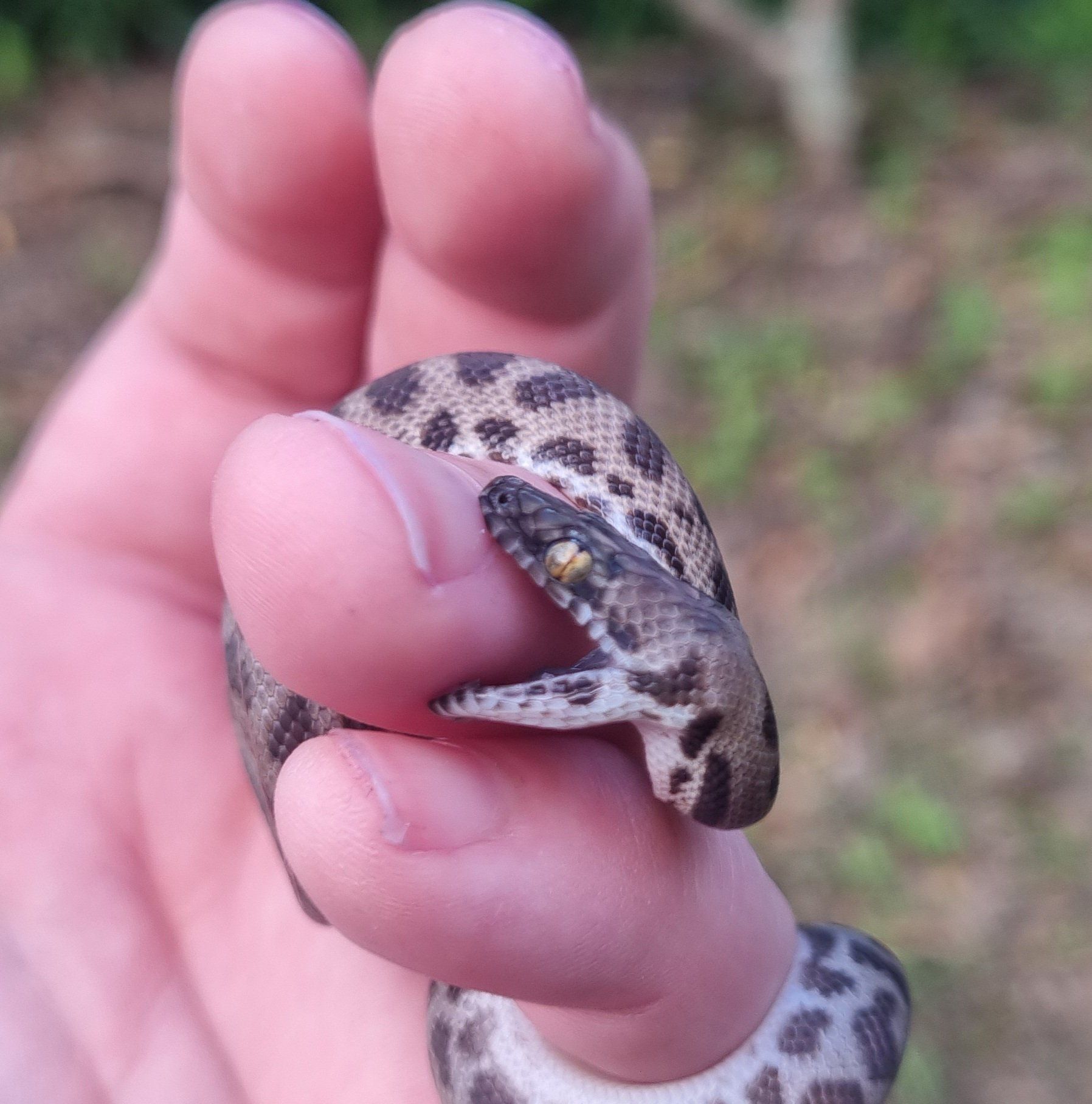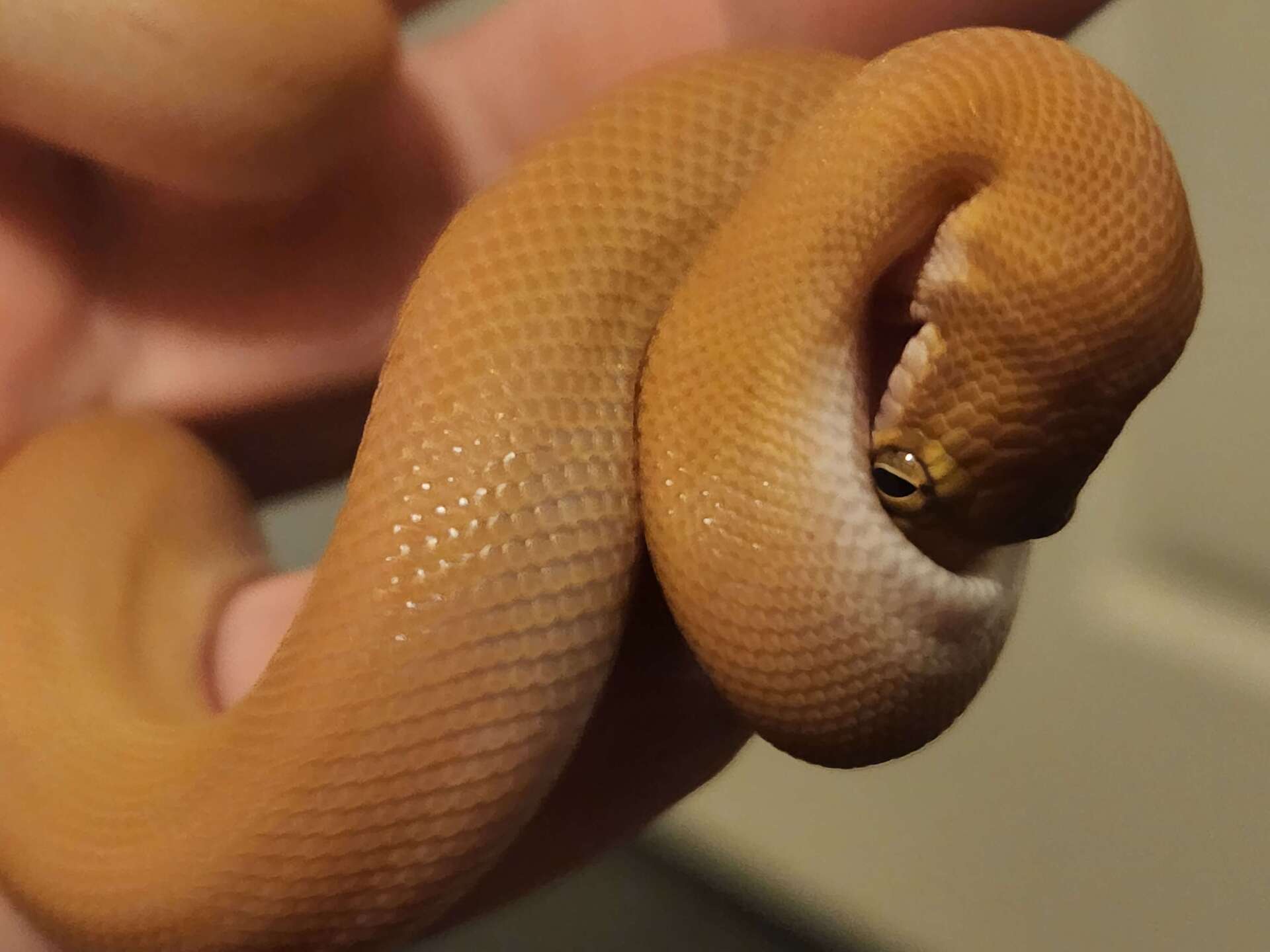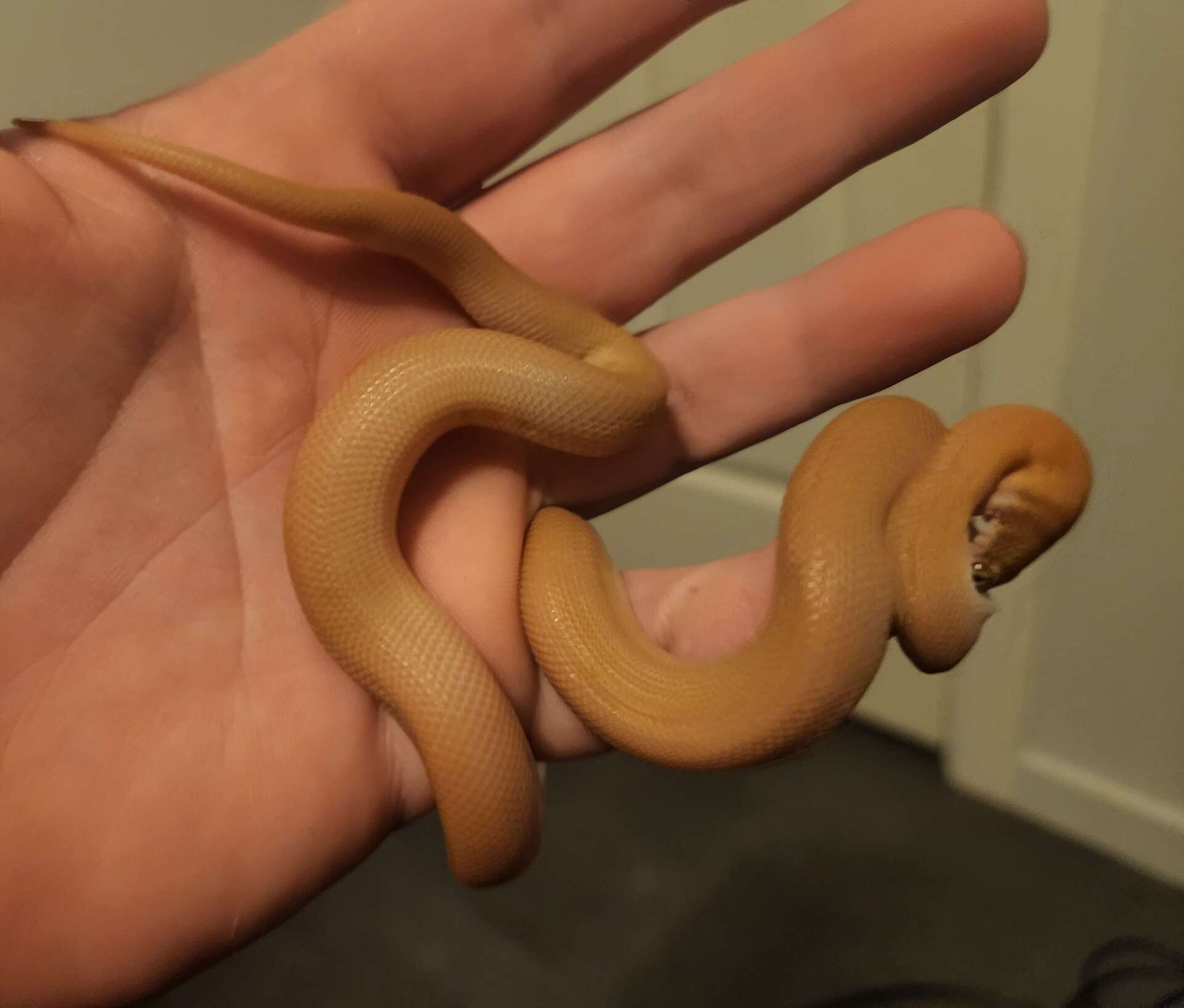How do I stop my snake from biting
One of the most common questions that seem to pop up on a lot of online forums that I follow, and to be honest, I rarely agree with the majority of the answers, is this: How to stop my snake biting.
This isn’t because I want to stir the pot and cause an argument, but rather, to challenge people’s way of thinking about how best to manage a biting snake, in the best interests of the snake!
I’d rather promote fear free handling of my pets, rather than forcing them to endure it simply for my own sake.
And I will be honest, some snakes just really do not want to be handled- and if that is the case, I prefer to let them do their own thing!
There has most certainly been a movement towards fear free handling and training of other species, including other reptiles like monitors.
I see people talk about ‘gaining their trust’ and building positive interactions all the time - yet why does this vary so significantly when compared to pythons?
If you’re interested in hearing more of my thoughts, I hope you read below...

1. Determine the response type
One of the first things to think about when you have an ‘aggressive’ or ‘bitey’ snake, is to determine whether it is a defensive fear based response, or whether it is a hunger/feeding response.
When the snake bites, does it bite and immediately try to pull away and either try to hide, or resume a defensive position?
Or does the snake bite and coil around you as if you were a prey item?
If it is the latter, your snake has a strong feeding response, and it’d be worthwhile re-assessing your feeding frequency, and the size of the prey you’re offering- are they getting enough food?
2. Feeding response - how to manage behaviour
Some individual snakes naturally have very strong feeding responses and will often strike and coil as if looking for another feed, even if they’ve literally just been fed!
Some people have a theory here, that by feeding the snake in a separate tub or enclosure, that they’ll then supposedly learn that they are eating only when in that tub, and are less likely to bite when being handled.
To me, this theory is significantly flawed.
If you think about it, if you take your python out of their enclosure, they would then be wondering whether they’re going to the feeding tub vs being handled, so may actually be more food-responsive and ‘bitey’ in anticipation of a possible meal.
In contrast, if you feed them in their own enclosure, as I do, they know if they’re getting fed because as soon as the enclosure opens, food is offered.
If it isn’t feed time, I reach in with a hook or something simple like a piece of paper towel to gently touch them, before lifting them out.
This way, they know once they’ve been hooked out or picked up, they’re being handled and won’t be offered food.
To me, this logically makes more sense, is more practical, and less stressful to the snake.
With some snakes, especially young ones in new environments, the physical act of putting them into a tub to feed them will stress them out and make them less likely to feed in the first place, or may even cause them to regurgitate their meal.
3. Fear Response - how to manage behaviour
If your snake is showing fearful behaviour, such as coiling, hissing, open mouth bluffing, striking and releasing/recoiling immediately, then my tactic changes significantly, and this is where I often disagree with some methods people promote on online forums such as facebook…
More often than not, when people ask about stopping their snake from biting, people firstly don’t generally even ask if it is a food response or defensive – this makes a huge difference in how to manage the issue!
Secondly, if someone says their snake is acting ‘aggressively’ (defensively- they are scared!) a common technique people recommend is essentially ‘flooding’ – repeatedly get the snake out of the enclosure despite its behaviour, no matter how many times you get bitten, and handle it as often as you can.
This to me sounds like a punishment, or bordering on… dare I say it… torture-like behaviour.
Imagine being locked in a room, and a giant hand periodically reaches in to forcefully grab you and move you around, naked and all exposed in the universe, with nothing to protect yourself, and no comprehension of what is going on?
Of course the snake is going to repeatedly hiss, coil defensively and strike, and may even be stressed enough to go off its food and stop displaying natural behaviours.
In my opinion, you need to do the total opposite of flooding.
Take a step back, reduce handling, ensure the animal feels secure:
- cover the sides of the enclosure if need be.
- re-assess the enclosure size and furnishings - is it too large or open and exposed for a small snake, understanding that they are all individuals and have different tolerances?
- Ensure the snake is eating properly and well established before even attempting to force them to be handled.
Initially, with my fearful and defensive snakes, I would literally just offer food every 5-7 days for hatchlings/juveniles, and once they felt secure enough with their prey I’d pop them aside on a piece of paper towel while I turbo-cleaned their tub or enclosure, before putting them back in and leaving them be - I’ve found this to be the least stressful way of performing general cleaning and husbandry.
- Eventually, and the time frame depends on the individual, they get to the stage where they expect anything going into the enclosure or tub to be food - great!
- They feel comfortable, and have settled into a routine!
- At this point, during my husbandry, I leave them out with their food slightly longer so they’re exposed to a few limited stimuli/more open environment whilst they already feel securely coiled around their prey and are pre-occupied.
- Once they’ve settled into a regular feeding routine, are no longer hungry and fearful, I will start gently opening the enclosure and using a hook to gently touch down their side for example.
- Based on their response, I’ll continue the limited touch with the hook (which appears to be less threatening and better tolerated than a chunky warm-blooded funny-smelling hand).
- As they no longer really react to the hook, I will trial using the hook to gently lift them from their mid body and simply place them on my hand, nice and calmly, in a room with no other movement or ‘scary things’ going on.
- I’ll let them gradually move across my hands, keeping my hands away from their heads, and ensuring their body is supported underneath at all times.
- Note that I do find Aspidites (black headed pythons and woma pythons) and occasional Antaresia can be slightly trickier, as I have had some where they will get frightened and ‘launch’ themselves off your hand to try and strike or bluff your other hand. Ideally you want to avoid this situation by not rushing things too quickly to get to this point in the first place.
- Over time, they become more desensitised to your handling, and with all of my guys, even those that come with a bad reputation for being bitey, have settled and are fine to handle once out of their enclosure.
- Once they’re at this point, gradually increase the duration of handling, within their comfort level, and you’ll generally find they rapidly settle down, and you can start introducing other external stimuli.


EXAMPLE:
Female Rough Scale Python, Thorn.
I purchased Thorn as a hatchling from the 2021 season, and she was extremely, extremely defensive to the point she was too pre-occupied with trying to lunge at me, or anything, that she sensed even remotely move past her tub, that she wouldn’t eat.
Here is the fear-free process I use to build trust and stop defensive biting:
- I kept slowly persisting- reduced traffic around her environment and reduced vibrations, and kept offering food.
- Eventually she started taking it, and over time her feeding confidence grew.
- When she had been at the stage of expecting food each time the tub was opened or when I was nearby, I started opening the tub for longer periods of time, often without having food - just so she could get used to my scent, the change in the air, the different environment.
- Gradually I started using the hook to desensitise her to being touched down the side and from beneath, and then lifted her onto my hands for short periods of time.
- She still has a great feeding response, but once she is out of the enclosure, she settles down.
- She can sometimes still be a little defensive if something startles her, but I simply sit still, wait til she has sussed things out, then let her keep moving around or if she remains stressed, return her to her enclosure.





